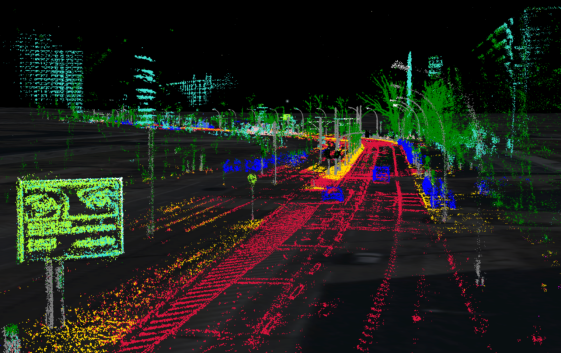
Septentrio, a manufacturer of high-accuracy GPS/GNSS technology for demanding applications, is providing positioning technology to Artisense, supplier of innovative computer vision solutions for automated vehicles. Artisense incorporates Septentrio GPS/GNSS in their latest Visual Inertial Navigation System (VINS), which was just demonstrated at the Auto.ai show in Berlin, Germany on September 25-27, 2019.
VINS combines computer vision, inertial sensors and GNSS measurements to deliver highly accurate global 3D positioning and orientation information in any environment, even indoors. “We are very pleased to work with Artisense on this technology and demonstrate how vehicle localization systems benefit from fusing computer vision with high-precision GNSS,” said Jan Van Hees, Business Development Director at Septentrio. “The result of our cooperation is precise localization in any environment offering positioning reliability and redundancy needed for safety-critical applications such as autonomous vehicles or robotics.”
Multi-constellation, multi-frequency GNSS technology provides reliable centimeter-level global positioning to the VINS system with accuracy required for lane-level maneuvering and V2V warning systems. Cameras and inertial sensors continue accurate localization as the vehicle moves into tunnels or parking garages with no line-of-sight to GNSS satellites. Although the system uses a relatively simple MEMs IMU and off-the-shelf cameras, it delivers precision and reliability of a high-end INS system. “Positioning accuracy and reliability are very important to us. Earlier this year we have deployed a large-scale mapping operation in Berlin where we tested a lot of different GNSS receivers. We saw the best results coming from Septentrio consistently,” said Johannes Start, Technical Product Manager at Artisense. “We continue to use Septentrio receivers because they are precise, they acquire RTK (Real Time Kinematic) fix quickly and reliably and they are easy to integrate.”
Artisense is designed to bring computer vision to every mobile robot and vehicle. Artisense offers a low-energy commercial off-the-shelf (COTS) embedded computer vision engine that requires a fraction of the power of other computing platforms. Backed by cloud-based algorithms, any industrial or automotive camera turns into a precise mapping and localization enabler, that can be operated alone or in combination with other sensors, to enable autonomous navigation for robots and cars in any space.
WHAT'S NEW
Home Driverless Cars Septentrio, Artisense Demonstrating Advanced Localization Technology for Autonomous Vehicles

